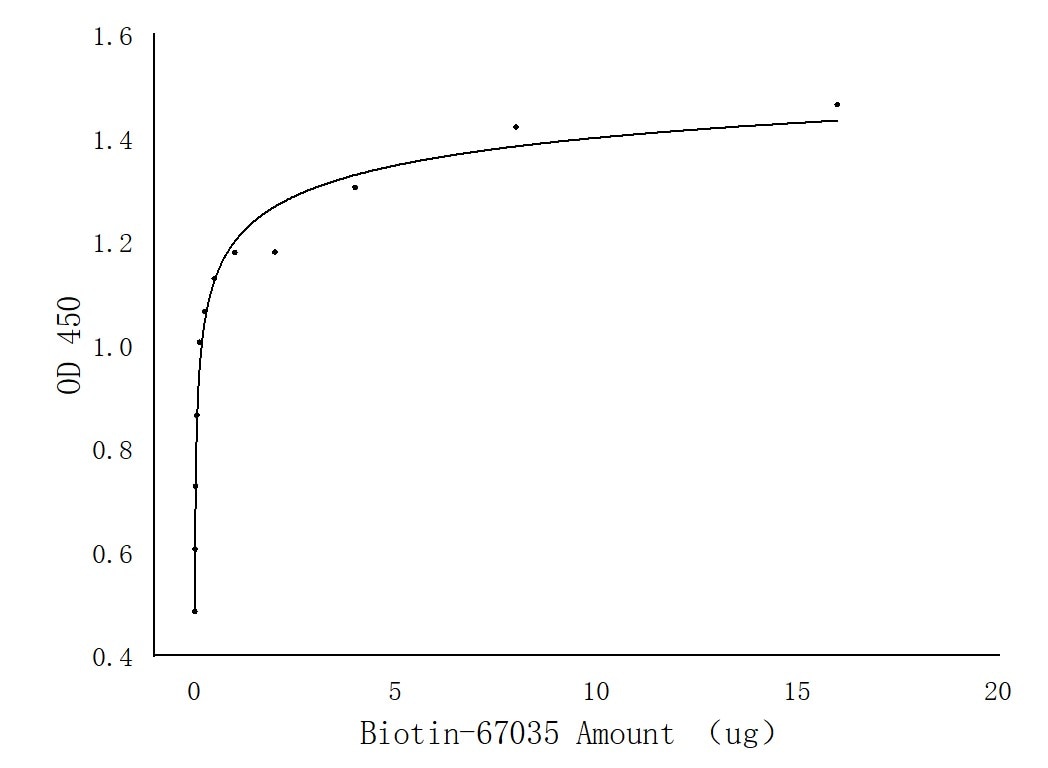Anticorps Monoclonal anti-CRK
CRK Monoclonal Antibody for ELISA
Hôte / Isotype
Mouse / IgG1
Réactivité testée
Humain, rat, souris
Applications
ELISA
Conjugaison
Biotin
CloneNo.
2B7E1
N° de cat : Biotin-67035
Synonymes
Galerie de données de validation
Applications testées
| Résultats positifs en ELISA | Ag28793 |
Dilution recommandée
| Application | Dilution |
|---|---|
| Test immuno-enzymatique (ELISA) | ELISA : 1:250-1:1000 |
| It is recommended that this reagent should be titrated in each testing system to obtain optimal results. | |
| Sample-dependent, check data in validation data gallery | |
Informations sur le produit
Biotin-67035 cible CRK dans les applications de ELISA et montre une réactivité avec des échantillons Humain, rat, souris
| Réactivité | Humain, rat, souris |
| Hôte / Isotype | Mouse / IgG1 |
| Clonalité | Monoclonal |
| Type | Anticorps |
| Immunogène | CRK Protéine recombinante Ag28793 |
| Nom complet | v-crk sarcoma virus CT10 oncogene homolog (avian) |
| Masse moléculaire calculée | 34 kDa |
| Poids moléculaire observé | 34 kDa |
| Numéro d’acquisition GenBank | BC008506 |
| Symbole du gène | CRK |
| Identification du gène (NCBI) | 1398 |
| Conjugaison | Biotin |
| Forme | Liquide |
| Méthode de purification | Purification par protéine G |
| Tampon de stockage | PBS with 50% glycerol, 0.05% Proclin300, 0.5% BSA |
| Conditions de stockage | Stocker à -20 °C. Éviter toute exposition à la lumière. Stable pendant un an après l'expédition. L'aliquotage n'est pas nécessaire pour le stockage à -20oC Les 20ul contiennent 0,1% de BSA. |
Informations générales
CRK is a member of an adapter protein family that binds to several tyrosine-phosphorylated proteins. CRK has several SH2 and SH3 domains (src-homology domains) and is involved in several signaling pathways, recruiting cytoplasmic proteins in the vicinity of tyrosine kinase through SH2-phosphotyrosine interaction. The N-terminal SH2 domain of this protein functions as a positive regulator of transformation whereas the C-terminal SH3 domain functions as a negative regulator of transformation.


